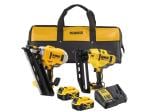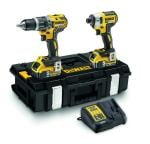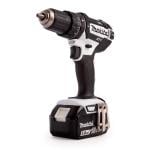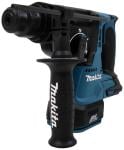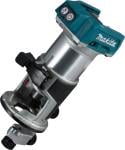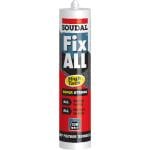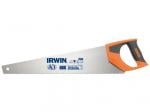What Are The Must Have Tools For Scaffolding?
As we all know, scaffolding is erected to serve as a work platform so that contractors can access areas which are too high to reach via conventional methods. But what few of us know is just how much work goes into it. Many contractors turn up to a job with the scaffolding already in place, crack on and finish their work, and then move onto the next one. Scaffolders should get more credit than they do.
They’re the bridge builders that build bridges before bridges can be built! Now, in this article, we’re going to look at what the must-have tools are for scaffolding. So, if you’re thinking about exploring the world of scaffolding yourself, then you should stick around. Let’s begin by breaking scaffolding down into its four basic parts so that we can determine what is needed to put it back together again:
- The planks
- Cross-bars
- Frames
- Connecting Pins
Most scaffolding accidents occur simply because the scaffolding hasn’t been assembled properly. Thus, it is paramount that you have the proper tools and ensure that you never skimp or rush a job. Scaffolding must be triple checks before being signed off as safe to use. Always and without fail.
Personal Protective Equipment (PPE)
We all know the score! Just like any job, the most important ‘must-have’ tools of all is your PPE. A scaffolder must always ensure that they are wearing proper personal protective equipment in order to keep themselves safe from the potential dangers that come with being on site and setting up scaffolding. This equipment will include a high-vis jacket, hard-hat, and steel-toed boots. And of course, if you happen to be working in an especially noisy environment (which is not uncommon in this line of work), you must also wear hearing protection.
Safety Harness and Lanyard
Whilst we’re on the subject of PPE, we just as well get the safety harness and lanyard out of the way. You see, the higher a scaffold goes, the more important it will be for you to have a strong safety harness and lanyard to keep you safe & secure. The harness comes in a number of styles & sizes, including waist and full body, while the conventional size of a lanyard tends to be 3.ft. Both are then attached to a safety rope and will protect the scaffolder from falling and injuring themselves if in the event the scaffolding happens to topple over or collapse.
Tool Belt
You’ll want a good quality leather tool belt with tool holders and pouches in order to keep all of your essentials on hand, whilst being safe & secure.
Level
The most important aspect of building a strong scaffolding is the foundation. This will need to be both solid, and level. In order to achieve this, you’ll need a decent level that can be used to double-check the assembled pieces and ensure that they are perfectly horizontal. Your best bet is to grab a 3.ft. level for these tasks. That said, a smaller bob level can be handy for carrying in a work pouch attached to your belt when you’re climbing higher up the scaffolding.
Claw Hammer
The claw hammer is a convenient tool that is incredibly versatile and can be found in almost every tradesman’s toolkit. Despite the fact that scaffolding is assembled using pins and clamps, a claw hammer is still incredibly handy for driving the pines into place and helping to remove them when the scaffolding is eventually being disassembled. Whilst there are many different styles and sizes, a scaffolder should endeavour to get their hands on a heavy-duty commercial claw hammer to be on the safe side.
Tape Measure
Certainly, a tape measure isn’t the most exciting of tools, but it’s essential when needing to measure the height of which the scaffold needs to be and can assist the worker when squaring up the frames. Additionally, a tape measure can come in very handy when having to make your own planks (which may be required if you happen to run out of planks due to having several jobs on the go). Another important use of the tape measure is to find the perfect distance from a building so that your scaffolding doesn’t invariably tilt as it goes up.
Socket Set
In order to assemble scaffolding, you’ll need a decent socket set. The cross-braces are attached to the main-frame of the scaffolding using pins or clamps. These clamps and pins have respective nuts and bolts which will need to be tightened/loosened when erecting or disassembling the scaffolding.
Impact Wrench (Scaffolders Wrench)

An impact wrench or scaffolders wrench is an essential item for assembling scaffolding as it simply speeds the process up when tightening/loosening bolts and ensures a more secure finish. We would highly recommend the Makita DTW285Z 18V Brushless Impact Wrench(follow the link for more info).
Your Wits
A scaffolder’s most important tool is their wits. You must be sharp and aware at all times when on site and assembling scaffolding so that you do not make trivial mistakes. It’s a dangerous game and when not taken seriously, people can get seriously injured, or worse.
Conclusion
There are certainly other tools that you may discover to be useful over time, but these are the essentials. Once you have these in your kit, you’ll be ready to tackle any scaffolding project. So, if you’re thinking about making the transition to scaffolding, tick off everything on this list and you’re good to go.


